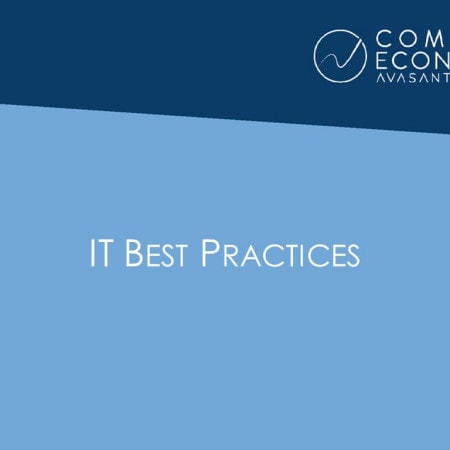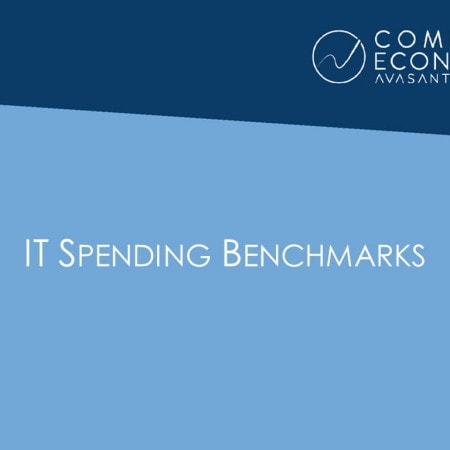-

The Cost of Security Breaches (May 2002)
The sixth annual Computer Crime and Security Survey conducted by the Computer Security Institute (CSI) with the participation of the San Francisco Federal Bureau of Investigation's (FBI) Computer Intrusion Squad provides an updated look at the impact of computer crime in the United States.
May, 2002
-

Management Tools and IP Move Into Enterprise Storage (May 2002)
Enterprise storage remains a hot area for development and controversy. Among the hottest issues are far less interoperability among storage vendors than in other IT applications, competing transfer technologies, and an ever-growing need for larger capacities and faster data transfers. Despite the difficulty managers encounter in configuring their storage systems, the outcome for almost all new installations will be improved performance with lower ownership costsâif not immediately, at least within the first two years of operation.
May, 2002
-

Enterprise Broadband Can Cut Costs (May 2001)
Internet emphasis has shifted from processing speed to bandwidth. The need for wider pipes grows with increases in traffic along with graphic and sound content. As an alternative to traditional T1 or ISDN lines, broadband access can reduce both costs and hassles.
May, 2002
-

Cash In Through B2B Exchanges (Jun 2001)
Many manufacturing companies are finding that because of business climate shifts their products are becoming a decreasing source of profits. Instead "soft" assets are becoming more important as companies evolve into content providers as well as being manufacturers. Content can be a major differentiator among competitors as customers come to value information and services that simplify their purchasing processes. Consequently, IT managers must recognize and buy into this trend. Fees for access to content can grow into a new channel for revenues. Computer Economics projects a rising trend in B2B revenues.
May, 2002
-

Expected Budget and Staffing Trends in Manufacturing Companies (Jun 2001)
Computer Economics has conducted annual benchmarking studies of IT budgets and technology trends since 1990. This analysis examines data from five key benchmarks for the last five years, benchmarking results from the 2001 study, and what we expect to occur during the next two years. The areas analyzed are budget changes, central IS budgets as a percent of revenue, central IS spending per employee, workers supported per IS employee, and the growth or reduction in IS staff.
May, 2002
-

Computing Power Trends by Platform and Organization Revenue TriMark – 1998 to 2000 (Feb 2001)
The Computing Power Trends by Platform and Organization Revenue TriMark shows changes in usage of various hardware platforms for the years from 1998 to 2000 by organization revenue. The types of platforms include mainframes ($1 million or more), midrange systems ($100,000 to $999,999), LAN servers/superservers, and PCs/workstations. The Computing Power Trends by Platform TriMark is designed to provide IT executives with a comparison of changes in computing power by platform for the last three years.
May, 2002
-

IS Department Budget as a Percentage of Total IT Spending InfoTechMark: TriMark 1998 to 2000 and DeciMark 1991 to 2000 (Feb 2001)
The IS Department Budget as a Percentage of Total IT Spending InfoTechMark shows the portion of IS spending that is accounted for on the central IS budget for each sector or by organization revenue. This benchmark is useful to IS managers or staff evaluating the portion of IS spending that is centralized and not centralized in their sector. The IS Department Budget as a Percentage of Total IT Spending TriMark shows average budget changes for 1998 to 2000. The IS Department Budget as a Percentage of Total IT Spending DeciMark shows average budget changes for 1991 to 2000.
May, 2002
-

Computing Power Trends by Platform and Organization Revenue DeciMark – 1991 to 2000 (Feb 2001)
The Computing Power Trends by Platform and Organization Revenue DeciMark shows changes in usage of various hardware platforms for the years from 1991 to 2000 by organization revenue. The types of platforms include mainframes ($1 million or more), midrange systems ($100,000 to $999,999), LAN servers/superservers, and PCs/workstations. The Computing Power Trends by Platform DeciMark is designed to provide IT executives with a comparison of changes in computing power by platform for the decade.
May, 2002
-

Computing Power Trends by Platform and Sector DeciMark – 1991 to 2000 (Feb 2001)
The Computing Power Trends by Platform and Sector DeciMark shows changes in usage of various hardware platforms for the years from 1991 to 2000. The types of platforms include mainframes ($1 million or more), midrange systems ($100,000 to $999,999), LAN servers/superservers, and PCs/workstations. The Computing Power Trends by Platform DeciMark is designed to provide IT executives with a comparison of changes in computing power by platform for the last decade.
May, 2002
-

Use of Contractor/Temporary Personnel DeciMark – 1991 to 2000 (Feb 2001)
The Use of Contractor/Temporary Personnel DeciMark provides the lower quartile, median, and upper quartile of contractor and temporary staff compared to the total staff in the information systems department. The data is presented for each sector or by organization size. The lower quartile (25th percentile) presents the lowest 25 percent of contractor/temporary personnel used by all of the organizations, where 25 percent used less than that amount. The median (50th percentile) is the level at which half of the organizations used less and the remainder used more. The upper quartile (75th percentile) presents the highest 25 percent of contractor/temporary personnel used by all of the organizations, where 25 percent used more than that amount. Results are presented for the period of 1991 to 2000.
May, 2002
-

Computing Power Trends by Platform and Sector TriMark – 1998 to 2000 (Feb 2001)
The Computing Power Trends by Platform TriMark shows changes in usage of various hardware platforms for the years from 1998 to 2000. The types of platforms include mainframes ($1 million or more), midrange systems ($100,000 to $999,999), LAN servers/superservers, and PCs/workstations. The Computing Power Trends by Platform TriMark is designed to provide IT executives with a comparison of changes in computing power by platform for the last three years.
May, 2002
-

Use of Contractor/Temporary Personnel TriMark – 1998 to 2000 (Feb 2001)
The Use of Contractor/Temporary Personnel TriMark provides the lower quartile, median, and upper quartile of contractor and temporary staff compared to the total staff in the information systems department. The data is presented for each sector or by organization size. The lower quartile (25th percentile) presents the lowest 25 percent of contractor/temporary personnel used by all of the organizations, where 25 percent used less than that amount. The median (50th percentile) is the level at which half of the organizations used less and the remainder used more. The upper quartile (75th percentile) presents the highest 25 percent of contractor/temporary personnel used by all of the organizations, where 25 percent used more than that amount. Results are presented for the period of 1998 to 2000.
May, 2002
-

Technology Acquisition Plans for the Next 12 Months: Organizations Planning to Make Acquisitions TriMark – 1998 to 2000 (Feb 2001)
Technology Acquisition Plans for the Next 12 Months: Organizations Planning to Make Acquisitions TriMark shows the percentage of organizations that intend to acquire technology within the next year. For each technology listed, the remaining percentage of sites does not plan to acquire that technology this year. Information is broken down by sector or organization size. Technology areas included are mainframes, midrange systems, LAN servers/superservers, desktop PCs, workstations, storage systems, network hardware, network software, database software, application software, ERP software, and e-commerce software. Results are presented for the period of 1998 to 2000.
May, 2002
-

Technology Acquisition Plans for the Next 12 Months: Organizations That May Acquire TriMark – 1998 to 2000 (Feb 2001)
Technology Acquisition Plans for the Next 12 Months: Organizations That May Acquire TriMark shows the percentage of organizations that may acquire technology within the next year but are not absolutely certain that they will acquire. For each technology listed, the remaining percentage of sites does not plan to acquire that technology this year. Information is broken down by sector or organization size. Technology areas included are mainframes, midrange systems, LAN servers/superservers, desktop PCs, workstations, storage systems, network hardware, network software, database software, application software, ERP software, and e-commerce software. Results are presented for the period of 1998 to 2000.
May, 2002
-

E-Business Practices by Sector and Organization Revenue TriMark – 1998 to 2000 (Feb 2001)
E-Business Practices TriMark provides the percentage of respondents in our study that have or utilize various e-business capabilities. Results are shown for each sector or size of organization. The e-business capabilities include having a website, engaging in Web-based business-to-business or business-to-consumer transactions, achieving profits on those e-commerce efforts, and outsourcing website functions. Other capabilities include EDI via the Internet, EDI via direct dial connections with suppliers, and EDI via direct dial connections with consumers. The following tables show data by industry sector and organization revenue. The TriMark results are presented for the period of 1998 to 2000.
May, 2002

 Grid View
Grid View List View
List View